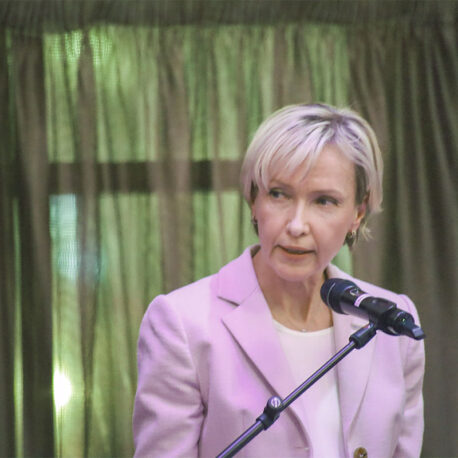
- Finnish legislation should permit variable-capital investment companies, which are already a standard in most of Europe.
- According to Doctor of Science (Econ./Business Adm.) Antti Vepsä, reviewing the regulation of funds would improve the international marketability of Finnish funds.
- The domicile of a fund matters: funds are a source of tax income, job creation and skilled workforce for their home state.
- Vepsä proposes that the legislation on variable-investment investment companies should be laid down in a new, separate act.
- The reform would not amend the Act on Common Funds or affect existing funds and fund management companies – instead, it would expand the range of options for investors.
Funds are a bustling international business. Finnish funds are an export product just like mobile games and cruise ships are. For their home state, funds are a source of tax income, job creation and skilled workforce. Doctor of Science (Econ./Business Adm.) Antti Vepsä’s dissertation shows that allowing the establishment of funds in the form of variable-capital investment companies would make Finland more attractive to international investors.
Vepsä is a senior associate specialising in investment funds at Castrén & Snellman Attorneys Ltd.
But what is a variable-capital investment company? Interviewed by Finance Finland, Vepsä explains that it is one of the possible ways to legally structure a collective investment scheme. A variable-capital investment company is, in a sense, a fund constituted in the form of a special-purpose limited liability company with fund investors as shareholders.
“Current Finnish law only permits contractual investment funds, in which the fund is managed by a fund management company, and the fund is not a legal entity of its own. In variable-capital investment companies, the fund is constituted in the form of a company that is a legal entity separate from the fund management company. This enables a more flexible management structure and improves investor protection and international marketability. This is more or less the standard structure elsewhere in the EU and the rest of the world”, says Vepsä.
Luxembourg and Ireland, for example – both heavy-weight players in the funds sector – market these kinds of funds especially to international investors. In fact, the majority of cross-border fund investment in the EU is into variable-capital investment companies.
“International investors are much more familiar with investment companies than with the contractual investment funds favoured in Finland. The investment company structure also enables better investor protection to start with, because the fund’s board of directors is responsible for supervising the interests of the investors. In the contractual structure, there is no board at fund level to supervise their interests.”
According to Vepsä’s dissertation, the most practical way to lay down the legislation on variable-capital investment companies would be to enact a new act that stands separate from the Act on Common Funds. This way the reform would not affect existing funds or their management companies: these would remain unchanged, and funds could be established in the same way as before.
“The reform would enable new ways of doing fund business and introduce new options for investors. It’s the same idea as in business regulation: to create different alternatives for different purposes, such as limited liability companies, limited partnerships, and so forth. The reform would not hamper existing fund operations but expand the range of options available instead.”
In Sweden’s footsteps
The reason for Finnish fund regulation being structured the way it is lies in recent history. Sweden adopted the contractual fund structure in the 1970s, and because Finland did not yet have any regulation on funds at the time, it modelled its own system after the regulation in Sweden and the other Nordic countries.
“During the comprehensive reform of the Finnish Act on Common Funds in 2016–2019, one of the aims was to enact regulation that would enable the investment company structure. Due to a lack of law-making resources and research data, this initiative never got past the continued drafting stage”, says Vepsä.
Financially prominent countries attract investment fund business by actively developing their regulatory competitiveness. Vepsä says that it is important Finland does not fall behind in this development. Enabling the investment company structure would improve Finland’s standing especially in the Nordic market, because it would be the first Nordic country to do so.
“My dissertation provides some long-awaited research information from the Finnish context. Legislators do not have to start from scratch, as many countries have had similar regulation for decades, and the investment company structure has been tried, tested and found to work in practice. There’s no need to reinvent the wheel”, Vepsä concludes.
Looking for more?
Other articles on the topic

The Nordic model for European savings and investments accounts is simply excellent – The Commission would be wise to look to the North

Commission unveils proposal to revive securitisation, aiming to strengthen EU capital markets

Investment should be encouraged with effective solutions, not regulation – The European savings and investments account would draw on member states’ best practices

Nappies, binkies and a portfolio of investments – Savings Starter for Children will raise baby investors
